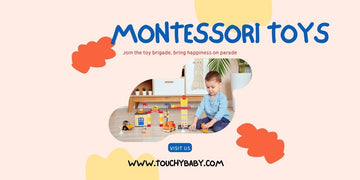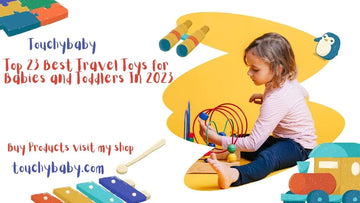
Creativity is a vibrant force that ignites the imagination, fuels innovation, and shapes the way we perceive and interact with the world. In the journey of childhood development, fostering creativity stands as an essential pillar, guiding children toward becoming resilient, adaptable, and inventive individuals.
As parents, caregivers, and guardians, you play a pivotal role in nurturing this precious gift within your children.
In a world undergoing rapid transformation, where new challenges demand fresh perspectives, creativity emerges as a powerful tool.
It's not confined to the realm of arts; rather, it permeates every aspect of life, from problem-solving and critical thinking to self-expression and collaboration.
Nurturing Creativity in Children: 7 Ways
Creating a Nurturing Environment:
A child's environment serves as the canvas upon which their creativity blossoms. Creating a nurturing environment lays the foundation for fostering imagination, exploration, and innovative thinking. As parents, you have the remarkable opportunity to shape this environment in ways that empower your children's creative potential.
Here are several strategies to consider:
- Providing Unstructured Playtime:
Allowing your children unstructured playtime is like granting them a blank canvas to paint their ideas upon. When children are free to explore, manipulate objects, and engage in spontaneous activities, their creative juices flow naturally.
Avoid over-scheduling and let them lead the way during these play sessions. Whether it's building forts, playing make-believe, or inventing their own games, unstructured play fosters creativity by encouraging them to think outside the box.
- Allowing Exploration and Curiosity:
Encourage your children to ask questions and explore their surroundings. Provide opportunities for them to investigate nature, experiment with everyday objects, and engage in hands-on learning. A curious mind is a creative mind, and by supporting their curiosity, you're helping them develop the skills to inquire, analyze, and imagine.
- Offering a Variety of Stimulating Experiences:
Expose your children to diverse experiences, both within and outside their comfort zones. Visits to museums, art galleries, science centers, and cultural events can inspire their creativity by introducing them to new ideas, perspectives, and artistic expressions. Exposure to various forms of art, literature, and music can stimulate their senses and broaden their creative horizons.
Encouraging Imaginative Thinking:
Imagination is the driving force behind innovation, problem-solving, and artistic expression. As parents, you have the incredible opportunity to nurture your children's imaginative thinking from an early age. By fostering an environment that values and encourages their creative thoughts, you can help them develop the ability to see beyond the ordinary and envision the extraordinary.
Here are some strategies to inspire and support imaginative thinking in your children:
- Reading and Storytelling:
Introduce your children to the magic of books and stories. Reading aloud to them exposes them to a world of characters, settings, and situations that stretch their imaginations. Encourage them to imagine alternative endings or new adventures for their favorite characters. Additionally, engage in interactive storytelling where you collaboratively create stories together, allowing their imaginations to run wild.
- Engaging in Pretend Play and Role Modeling:
Pretend play is a powerful tool for developing imagination. Provide dress-up clothes, props, and an imaginative space where your children can explore different roles and scenarios. Join them in their make-believe worlds and show them that it's okay to think outside the box and embrace their creativity.
- Limiting Screen Time:
While screens can offer entertainment, they can also limit imaginative thinking. Excessive screen time can replace active imaginative play with passive consumption. Encourage activities that involve creating, building, and exploring the real world to keep their minds engaged and imaginative.
Supporting Artistic Expression:
Artistic expression is a remarkable channel through which children can convey their emotions, ideas, and unique perspectives. As parents, you play a significant role in nurturing this form of creativity, allowing your children to explore, experiment, and communicate through various art forms.
Here are ways to support and encourage your children's artistic expression:
- Supplying Art Materials and Tools:
Create a dedicated space stocked with a variety of art supplies – from crayons and markers to paints, clay, and collage materials. Having easy access to these materials invites spontaneous creativity and allows your children to experiment with different mediums.
- Praising Effort Over Perfection:
Shift the focus from producing perfect art to valuing the effort and enthusiasm your children put into their creative endeavors. Celebrate their willingness to explore, try new techniques, and express themselves, regardless of the final result.
- Providing Creative Prompts:
Offer prompts or themes that spark their imagination and guide their artistic projects. Encourage them to illustrate scenes from their favorite stories, imagine fantastical creatures, or illustrate their dreams. These prompts can inspire unique interpretations and inspire deeper creative thinking.
Embracing Problem Solving and Critical Thinking:
Problem solving and critical thinking are essential skills that empower children to navigate challenges, make informed decisions, and approach life with a thoughtful and analytical mindset. As parents, you can play a significant role in nurturing these skills from an early age, setting the stage for your children to become resourceful, resilient, and innovative individuals.
Here's how to embrace and encourage problem solving and critical thinking in your children:
- Presenting Open-ended Challenges:
Offer your children open-ended problems or scenarios that require creative solutions. These challenges encourage them to think beyond the obvious and explore various approaches. Ask questions like, "How can you build a bridge using only paper and tape?" or "What's the best way to use a cardboard box?"
- Encouraging Brainstorming and Idea Generation:
Create a safe space where your children feel comfortable sharing their ideas without fear of judgment. Encourage them to brainstorm multiple solutions to a given problem. Teach them that even seemingly unconventional ideas can lead to innovative solutions.
- Discussing Real-world Issues:
Engage your children in discussions about real-world problems and current events. This prompts them to think critically about complex issues, analyze different viewpoints, and consider the potential consequences of different actions. Encourage them to propose their own ideas for addressing these problems.
Fostering Curiosity and a Growth Mindset:
Curiosity and a growth mindset are the cornerstones of lifelong learning and continuous personal development. As parents, you have the remarkable opportunity to cultivate these traits in your children, setting the stage for their intellectual, emotional, and social growth.
Here's how you can foster curiosity and a growth mindset in your children:
- Asking Open-ended Questions:
Encourage your children to ask questions that promote deeper exploration. Instead of providing immediate answers, engage them in conversations that encourage critical thinking and curiosity. This habit of questioning will lead them to seek understanding and knowledge independently.
- Exploring New Interests Together:
Share your interests and passions with your children, and be open to exploring their interests as well. Exploring new subjects, hobbies, or activities together not only sparks curiosity but also demonstrates the joy of learning and trying new things.
- Providing Access to Resources:
Offer a range of resources, such as books, documentaries, educational apps, and online resources, that cater to your children's interests. This gives them the tools to quench their curiosity and delve deeper into subjects they find intriguing.
Balancing Structured Activities and Free Time:
Striking a harmonious balance between structured activities and free time is essential for your children's holistic development. While structured activities provide valuable learning opportunities, free time encourages creativity, self-discovery, and relaxation. As parents, you play a crucial role in creating a balanced routine that nurtures both aspects of your children's growth.
Here's how you can achieve this equilibrium:
- Recognizing the Benefits of Structured Activities:
Structured activities, such as classes, sports, and clubs, offer a structured framework for skill development, social interaction, and goal setting. They provide a foundation for discipline, time management, and teamwork while allowing your children to explore their interests in a focused manner.
- Prioritizing Unstructured Free Time:
Unstructured free time is where spontaneous exploration and self-directed play thrive. It allows children to follow their own interests, engage in imaginative activities, and simply relax. Ensure that there's ample unstructured time in their schedule to encourage independent thinking and creativity.
- Coordinating Activities Mindfully:
When enrolling your children in structured activities, choose options that align with their interests and passions. Overloading their schedule with too many commitments can lead to burnout and hinder their ability to engage in unstructured play.
Providing Opportunities for Collaboration:
Collaboration is a vital skill that prepares children for success in both their personal and professional lives. Working with others encourages teamwork, communication, and the exchange of diverse ideas. As parents, you can facilitate collaboration by creating an environment that fosters shared learning and cooperation.
Here's how you can provide opportunities for collaboration in your children's lives:
- Arranging Group Projects with Peers:
Encourage your children to engage in group projects with their peers. Whether it's a school assignment, a creative endeavor, or a community service project, collaborating with others teaches them how to coordinate efforts, allocate tasks, and contribute to a collective goal.
- Encouraging Teamwork and Idea-sharing:
Promote the value of teamwork by highlighting how different strengths and perspectives contribute to a richer outcome. Encourage your children to collaborate with siblings, friends, or classmates on projects that require brainstorming, problem solving, and creative thinking.
- Supporting Sibling Collaborations:
Foster collaboration within your own family by assigning joint tasks or projects to siblings. This not only promotes cooperation but also nurtures a sense of shared responsibility and accomplishment.
Conclusion:
In the intricate tapestry of childhood development, fostering creativity emerges as a guiding thread. By embracing unstructured exploration, encouraging imaginative thinking, and promoting collaboration and critical thinking, you lay the groundwork for a future rich with innovation.
Balancing structured activities with free time, nurturing curiosity, and cultivating a growth mindset molds well-rounded individuals poised for success. As parents, your nurturing hand shapes the canvas upon which your children's creativity flourishes, enabling them to navigate an ever-changing world with ingenuity and confidence.




